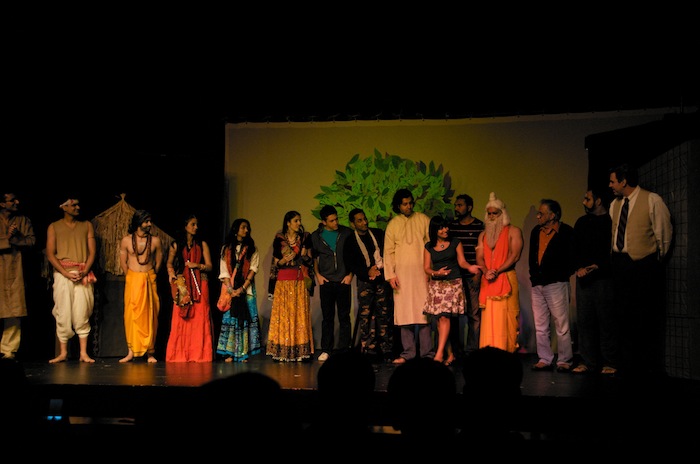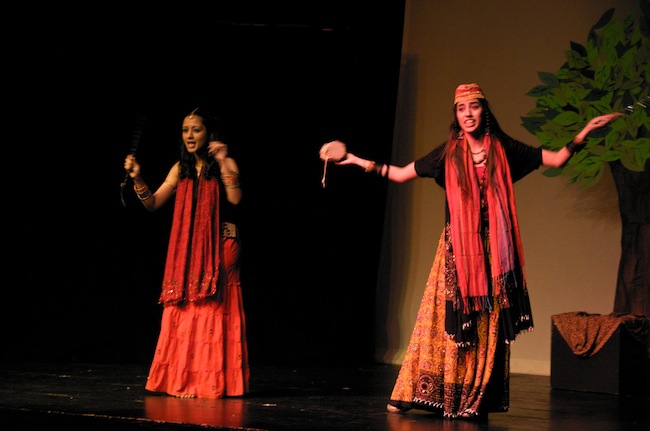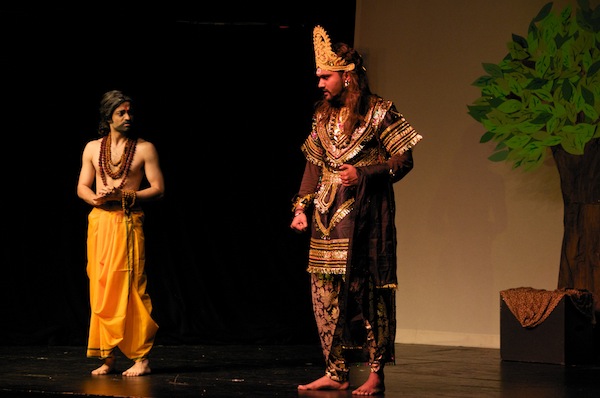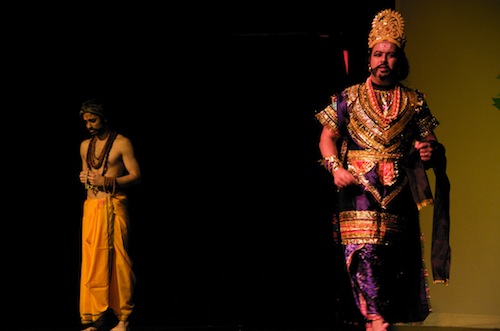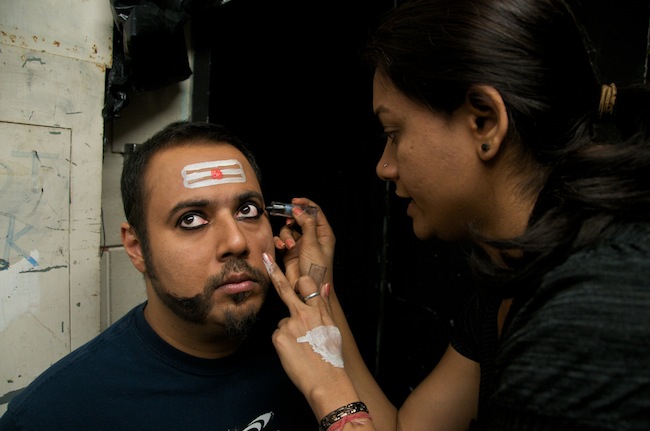Contribute
| SETU - Mareech The Legend |
Ranjani Saigal
11/24/2009
(Photos Courtesy Varsha Yeshwant , Student of Photojournalism at Boston University) SETU under the direction of Mohan Dali presented “Mareech The Legend†at the Arlington Theater for the Arts on Friday Nov 21st, 2009. The playwright, Arun Banerjee uses a clever juxtaposition of the classic tale of Mareech from the Ramayana with contemporary controversies to understand the moral dilemmas that often lead good people to make the wrong choices. Legend has it that during the battle with Lord Rama, Mareech was shot with a divine arrow that carried him all the way to Lanka where , Ravana the king saved him. Mareech was so transformed by the battle with Rama that he decided to give up his violent ways that was taught to him by his mother , the demon Taraka and spend his life as a mendicant worshiping Vishnu. His peaceful existence is disturbed as he is called upon by Ravana to assume the form of a Golden Deer to distract Rama so that Ravana could then kidnap Sita. This puts him in a moral dilemma where he is torn between his loyalty to Ravana who, though an oppressor is also his benefactor and Rama. He decides to do the task as asked by Ravana and justifies his action saying that it is better to die at the hands of Rama than that of Ravana. The play highlights this very choice that Mareech made, and asks the question "What if Mareech stood up to Ravana?" What if the oppressed did what was morally right in the face of tyranny and oppression , no matter what his obligations are? The play showcased three tales - the first one of Mareech, the second of a character named Easwar, a thug for hire in India and the third of a character named Gregory, the son of an eminent American Professor. Easwar is asked by his landlord (Pal Babu) to create a riot and distract the farmers so that the landlord could use the distraction to steal the grain from the poor farmers. Gregory is blackmailed by Senator Williams to support and take part in a war that he does not believe in. The play was done using the Indian street theater format with Vasundhra Ganju and Swathi Bangalore playing the role of Ustad or Sutradhar. In this format the Ustads interact with the audience using their wit and wisdom to use the plays to deal with contemporary issues. Very often the actor fails to remain in character and come into their real life persona(Eg. Valmiki asks for a cigarette during his dialogue). The street theater form allows the play to seemingly not follow a script or rather the script is changed based on the mood of the actor. This was a clever way to allow the playwright the luxury of trying multiple paths through his scripts and deal with multiple "What if" scenarios. Idealism and realism often clashed on stage with the playwright trying to present consequences of actions rather than deciding whether the characters made the right choice. Kudos to director Dali for bringing out the best in each character. The costumes , the sets and the lighting were terrific and showed Dali's professional expertise. The main characters, Gagan Mahan as Mareech, Ajay Jain as Easwar and Tarek Anous as Gregory played the role of the conflicted victim beautifully. Ajay Jain was particularly brilliant. Also of note was Bryan McKeon as Senator Williams who played the role to a T. While the play opened brilliantly laying out the characters and the situations , the second half meandered and confused the audience. The Ustad's constant rejoinder on "How are we going to end the play" was probably a reflection of the playwrights own struggle. The street idiom was over used with the Ustad's role at times seemingly forced upon the audience at times. Perhaps street theater is meant to allow a non-scripted performance and a scripted performance using a street theater idiom does throw things off a little. But the actors themselves were brilliant and did a great job. It was a delight to watch a such a beautiful theatrical presentation in Boston. Kudos to SETU.
You may also access this article through our web-site http://www.lokvani.com/
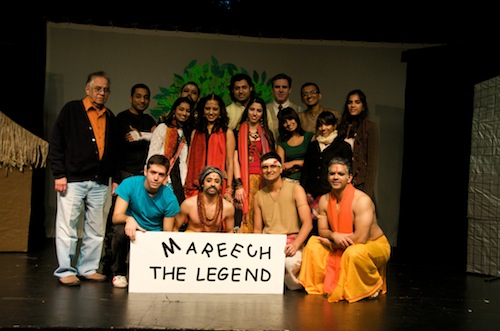
Photos Courtesy Varsha Yeshwant (Student of Photojournalism at Boston University)
